Best portable power stations UK – in stock now
To help you choose a good quality power bank which suits your needs, we’re covering the best portable power stations available in the UK: the EcoFlow, the Jackery, and the Bluetti PowerOak. They all have their own benefits, features, and price points, so we’ll be summarising the numbers to give you an easy comparison between the brands.
EcoFlow
Jackery
PowerOak
EcoFlow, Jackery, and Bluetti PowerOak are all reputable brands who produce good quality products designed to last. However, EcoFlow powerbanks tend to come with a few extra features, such as fast charging, larger inverter sizes, and a couple of extra sockets, although this is reflected in their slightly higher prices.
We sell all of these powerbanks on our webshop, alongside the portable solar panels which make a great addition to your set-up for recharging when you’re off-grid. Here’s a breakdown of our favourite power stations, split up into small, mid-sized and large units, depending on what you’re looking for.
Which size powerbank do you need?
The small units are great for charging electronic devices and can power low-wattage appliances, the mid-sized models will be able to power appliances with a higher-wattage and their bigger battery capacity will be better for working remotely if you need reliable power for your laptop. The large models are designed to power high-wattage appliances for multiple days off-grid and can even surpass the need for a complex electrical system in a campervan.
Small
Medium
Large
Best small portable power stations
Small portable power stations are great for charging electronics when you’re on the move and for powering small, low wattage appliances, such as outdoors lights, hair straighteners or a speaker. They’re perfect for everyday use, weekend camping trips or as backup power in a campervan. Their small size makes them easy to carry and transport, but you won’t be able to power appliances with a high power draw.
Comparison: EcoFlow RIVER Mini vs EcoFlow RIVER vs Jackery 240
The EcoFlow RIVER Mini, the EcoFlow RIVER and the Jackery 240 are all good quality, small powerbanks which provide 12V and 230V off-grid power without breaking the bank (or your back). They can all be recharged in three different ways: from mains power, from solar panels, or from a cigarette lighter socket in a car.
Each powerbank has a slightly different battery capacity, inverter size and recharge speed. The size of the inverter is particularly important because it will limit the type of appliance you can power from your powerbank.
Here’s a summary of the numbers you’ll need to directly compare these three models:
| EcoFlow RIVER Mini | EcoFlow RIVER | Jackery Explorer 240 | |
|---|---|---|---|
| Battery | 210Wh | 288Wh | 240Wh |
| Inverter | 300W | 600W | 200W |
| Recharge time | 1.6 hours | 1.6 hours | 5-6 hours |
| 230V plug sockets | 2 | 3 | 1 |
EcoFlow RIVER Mini
The EcoFlow RIVER Mini is the smallest of these three models, at 25cm x 14cm x 13cm, making it the lightest and most packable. However, it’s small size is only possible because it doesn’t have a carry handle, which makes it a little more awkward to move around. The defining features of the RIVER Mini are the option to choose a model with a wireless charging pad and its fast charging capabilities.
Both Ecoflow powerbanks have fast charging, which means they will be fully charged in just 1hr 40mins when they’re plugged into mains power, as opposed to the Jackery which takes 5-6 hours.
It’s also worth noting that EcoFlow powerbanks come with an MC4 connector cable for connecting to solar panels. MC4 connectors are the most commonly used solar panel connectors, so if you already have a solar panel, EcoFlow powerbanks are easier to connect to than the other brands which come with a less common connector type.
EcoFlow RIVER
The EcoFlow RIVER has three 230V plug sockets and is the largest of these three models, in size, but also in battery capacity and inverter power. The 600W inverter is pretty substantial for this size of powerbank and will provide a bit more versatility in terms of the appliances you’ll be able to power. If you want to power an appliance which needs more than 300W, you’ll need the EcoFlow RIVER to handle the higher power draw.
The RIVER also has a modular battery system so you could easily upgrade to the RIVER Max if you need more battery power. An additional battery can be bought separately which would double your capacity up to 576Wh.
If you’d like to learn more about the EcoFlow RIVER, read our review article: EcoFlow RIVER review.
Jackery Explorer 240
Finally, the Jackery 240 is probably the least impressive of these three models, with only one 230V plug socket, no USB-C or fast charge USB ports, and a much slower recharge speed. However, it’s still a good product, has a nice ergonomic handle and is the cheapest option of the three small powerbanks.
If you’d like to learn more about the Jackery Explorer 240, read our review article: Jackery 240 review.
Best mid-sized portable power stations
A mid-sized portable power station will be great for charging electronic devices and will also be capable of powering mid-wattage appliances, such as power tools, a blender, or a low wattage kettle. A mid-sized powerbank would be a great option for someone trying to work remotely, giving you reliable power for multiple laptop recharges and the flexibility to work in any location.
These powerbanks also have the potential to be used as a power source for campervaners. You’ll have access to 12V and 230V power without the time and hassle of a permanent electrical installation. Their battery capacity is still a bit smaller than a typical campervan leisure battery, but as long as the sun’s out, a portable solar panel can be used to recharge the powerbank, giving you potentially endless energy.
The EcoFlow RIVER Max, the PowerOak AC50 and the Jackery 500 are three of the best portable power stations in the UK with around 500Wh of battery power.
Comparison: EcoFlow RIVER Max vs PowerOak AC50 vs Jackery 500
All three of these models can be charged from 230V mains power, from a 12V car cigarette lighter socket, or from solar panels, but they all have a different battery capacity, inverter size and charging speed. Here’s the numbers for a quick comparison:
| EcoFlow RIVER Max | PowerOak AC50 | Jackery Explorer 500 | |
|---|---|---|---|
| Battery | 576Wh | 500Wh | 518Wh |
| Inverter | 600W | 300W | 500W |
| Recharge time | 1.6 hours | 5 hours | 6.5 hours |
| 230V plug socket | 3 | 2 | 1 |
EcoFlow RIVER Max – 576Wh
Although it is the most expensive of these three models, the EcoFlow RIVER Max has the most battery capacity, the largest inverter, and the fastest recharge speed from mains power. All EcoFlow powerstations are equipped with fast charging technology which allows the RIVER Max to charge in just 1hr 40mins, as opposed to the other models which take 5 or 6 hours.
The RIVER Max can also connect to more solar power than the other two models, so if you want a faster charge when you’re off-grid with no access to mains power, you can connect 2 x 110W solar panels to the RIVER Max which should fully recharge the pack in just 3 hours (with good sunlight). The other models will take twice as long since they can only connect to one 110W panel.
The RIVER Max also has a pretty cool feature which sets it apart from other mid-sized powerbanks: the battery pack is split into two modules, where one half can be removed, giving you a lighter, more transportable powerbank when you need it (this turns the RIVER Max into the RIVER).
If you’d like to learn more about the EcoFlow RIVER Max, read our review article: EcoFlow RIVER Max review.
PowerOak AC50 – 500Wh
The PowerOak AC50 is the smallest of these three models and includes a wireless charging pad on the top of the unit.
The AC50 still has a good variety of ports to choose from, but when it comes to 230V power, the 300W inverter is pretty small for this size of powerbank, limiting the types of appliances you’ll be able to use. In conjunction with a portable solar panel, this powerbank would be a great option for remote workers, but won’t work for anyone who needs to power an appliance which draws more than 300W.
If you’d like to learn more about the PowerOak AC50, read our review article: PowerOak Bluetti AC50 review.
Jackery 500 – 518Wh
The Jackery 500 is pretty similar to the PowerOak AC50 in terms of battery size, price, and charging speed, although it doesn’t have a wireless charging pad and only has one 230V socket, meaning you won’t be able to charge two laptops simultaneously if you’re working with a partner.
However, the Jackery 500 has a bigger inverter (500W as opposed to 300W) with a much larger surge tolerance (up to 1000W), so will give you more options in terms of powering mid-wattage appliances.
If you’d like to learn more about the Jackery Explorer 500, read our review article: Jackery 500 review.
EcoFlow RIVER Pro – 720Wh
We haven’t actually included the RIVER Pro in the comparison table for the mid-sized power stations, because it’s a little bigger, but not quite big enough to make it into the large category either.
The EcoFlow RIVER Pro is very similar to the EcoFlow RIVER Max, but it’s been designed for more intensive use. It doesn’t have a removable battery pack, but has an extra 140Wh of battery power and a battery lifespan of 800 cycles, rather than 500 cycles like the other models in this category. The RIVER Pro is a good choice if you want a little bit more battery power and longevity, without entering the realm of the large power stations, where the weight, size and price begins to ramp up.
Best large portable power stations
Large portable power stations have been designed to give you long term, flexible access to off-grid power with large battery banks, large inverters and longer battery life, and they’re still (just) light enough to be transported and used in any location.
These powerbanks definitely have the potential to keep you powered in your campervan (a 1200Wh powerbank is equivalent to a 100Ah lithium leisure battery) and their large inverters can handle high-wattage appliances such as coffee makers, hairdryers, or even a portable induction hob.
Comparison: EcoFlow DELTA series vs Jackery 1000
The EcoFlow Delta powerbanks and the Jackery 1000 are four of the best portable power stations in the UK with large battery banks.
The Jackery 1000 is very similar to the smaller Jackery models, but EcoFlow have produced a series of large power stations which are a step above their smaller models, in capability and in price, called the DELTA, the DELTA Mini and the DELTA Max. All four can be charged from mains power, a car cigarette lighter socket, or from solar power, and they all have a selection of 12V DC outlets such as USB, USB-C and a cigarette lighter socket.
Here’s a direct comparison between each of the DELTA series powerbanks and the Jackery 1000.
| EcoFlow DELTA Mini | EcoFlow DELTA | Jackery Explorer 1000 | |
|---|---|---|---|
| Battery | 882Wh | 1260Wh | 1002Wh |
| Inverter | 1400W | 1800W | 1000W |
| Recharge time | 1.6 hours | 1.6 hours | 5.5 hours |
| 230V plug sockets | 3 | 4 | 3 |
EcoFlow DELTA Mini – 882Wh
‘Mini’ in name only, this powerbank has an 882Wh battery, a 1400W inverter, and can plug into 300W of solar power. Just like the smaller EcoFlow powerbanks, the DELTA Mini will only take 1hr 40mins to fully recharge when you have access to mains power and the cycle life of 800 cycles outperforms the Jackery 1000 which has only 500 cycles.
The 1400W inverter still has a surge rating of 2100W, so you should be able to power appliances like a microwave or a low wattage kettle, but 1400W won’t be enough to power a hair dryer or an induction hob.
To account for the increasing weight of the DELTA powerbanks, EcoFlow have included two handles for easier, two-handed carrying.
EcoFlow DELTA – 1260Wh
The EcoFlow DELTA has ramped up in price, but justifies that price with a 1260Wh battery capacity and a 1800W inverter. This size of inverter will be able to power a whole variety of 230V appliances and should be able to power a low-wattage induction hob, depending on the model.
EcoFlow DELTA Max – 1612Wh or 2016Wh
We haven’t included the DELTA Max in the comparison table because it’s almost double the size of the other powerbanks in the ‘large’ category!
The EcoFlow DELTA Max is the ultimate, extra-large, off-grid power station, with a battery capacity equivalent to that of a mid-range campervan electrical system and an inverter which can power almost any 230V appliance. The inverter can provide 2400W of power which is equivalent to the capability of many campsite electric hook-up points. An inverter this size will be able to power devices such as a hairdryer or a portable induction hob and with the battery capacity of either 1612Wh or 2016Wh, will be able to power mid-wattage appliances for hours on end.
The DELTA Max can also connect to a whopping 800W of solar if you really wanted to, although this would take up a lot of packing space and would make the whole assembly a lot less portable. A more modest solar array of 3 x 160W solar panels will take around 10 hours to fully recharge the pack (assuming you can get 10 hours of perfect sunlight).
At 22kg, this powerbank is already pretty bulky, and some people might find it too heavy to move around easily, but if you need even more battery capacity, the DELTA Max has the ability to connect one or two extra battery modules, bringing the capacity up to 4032Wh or even 6048Wh!
Finally, a unique feature of the DELTA Max is the ability to monitor the device through the EcoFlow app. Tracking via the app shows how much power is being drawn from each output and allows you to monitor accumulative solar input and battery temperature. The app will also calculate how much time you have left until your power runs out, based on your current usage.
Jackery 1000 – 1002Wh
After reading about the DELTA Max, the Jackery Explorer 1000 might seem like a bit of an anti-climax, but it’s still a really good product and can store a decent amount of power at a much smaller size and cheaper price.
The 1002Wh battery capacity is somewhere between the DELTA and the DELTA Mini but is actually a little lighter (10kg) than even the Mini, and the 1000W inverter will be able to power things like a toaster, a blender or a small coffee machine. Jackery has chosen to stick with the one-handled design for the Explorer 1000, which might be more practical when you’re trying to carry it further or ferry things back and forward to the car.
Unfortunately, the Jackery 1000 doesn’t have the luxury of the extra fast charging times that the EcoFlow powerbanks do, so you’ll have to wait 5 or 6 hours for the unit to recharge when you have access to mains power. Finally, the EcoFlow powerbanks boast an 800 cycle lifespan for their lithium battery packs where as the Jackery 1000 has a lifespan of 500 cycles, so if you think you’ll be putting your powerbank through its paces, with regular use and deep discharges, it might be worth investing in an EcoFlow powerbank.
If you’d like to learn more about the Jackery Explorer 1000, read our review article: Jackery 1000 review.
EcoFlow DELTA Pro
The EcoFlow DELTA Pro is another step above the DELTA Max, with a 2400W inverter and a 3600Wh battery capacity, which can be doubled or even tripled with an extra battery pack, called the DELTA Pro Smart Battery. You’ll need a lot of solar power to recharge this powerbank (4 x 400W would take 2.8-5.6 hours), but luckily, there are two possible methods of ultra-fast charging.
The DELTA Pro can be charged from a mains plug in just 1.9hours, or from an electric vehicle charging point which will also give you a full recharge in less than two hours. Finally, this powerbank has been designed for long-term, intensive use and comes with a battery cycle life of 3500 cycles, which is much bigger than the 800 cycles of the smaller EcoFlow power stations. This means that you could use this powerbank everyday for 10 years before the battery begins to show significant degradation (less than 80% of original capacity).
Are you looking at portable powerbanks because the prospect of designing campervan electrics seems daunting and you don’t know where to start? Try our free electrical system design service where all you have to do is answer some questions and we’ll send you a bespoke design proposal for free! If you decide to order your components through us, we’ll also send you a free wiring diagram.
Campervan electrics leaving you confused?



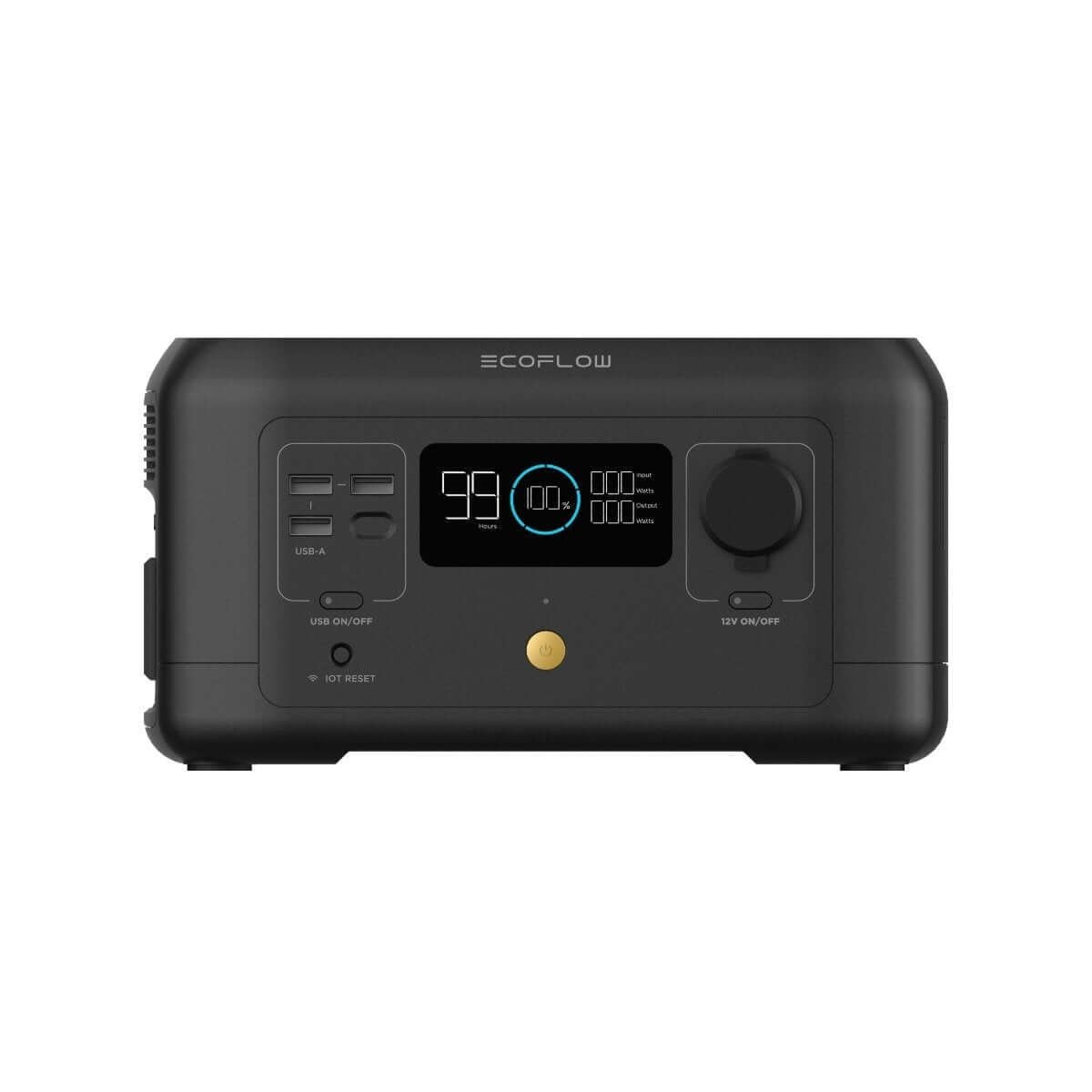
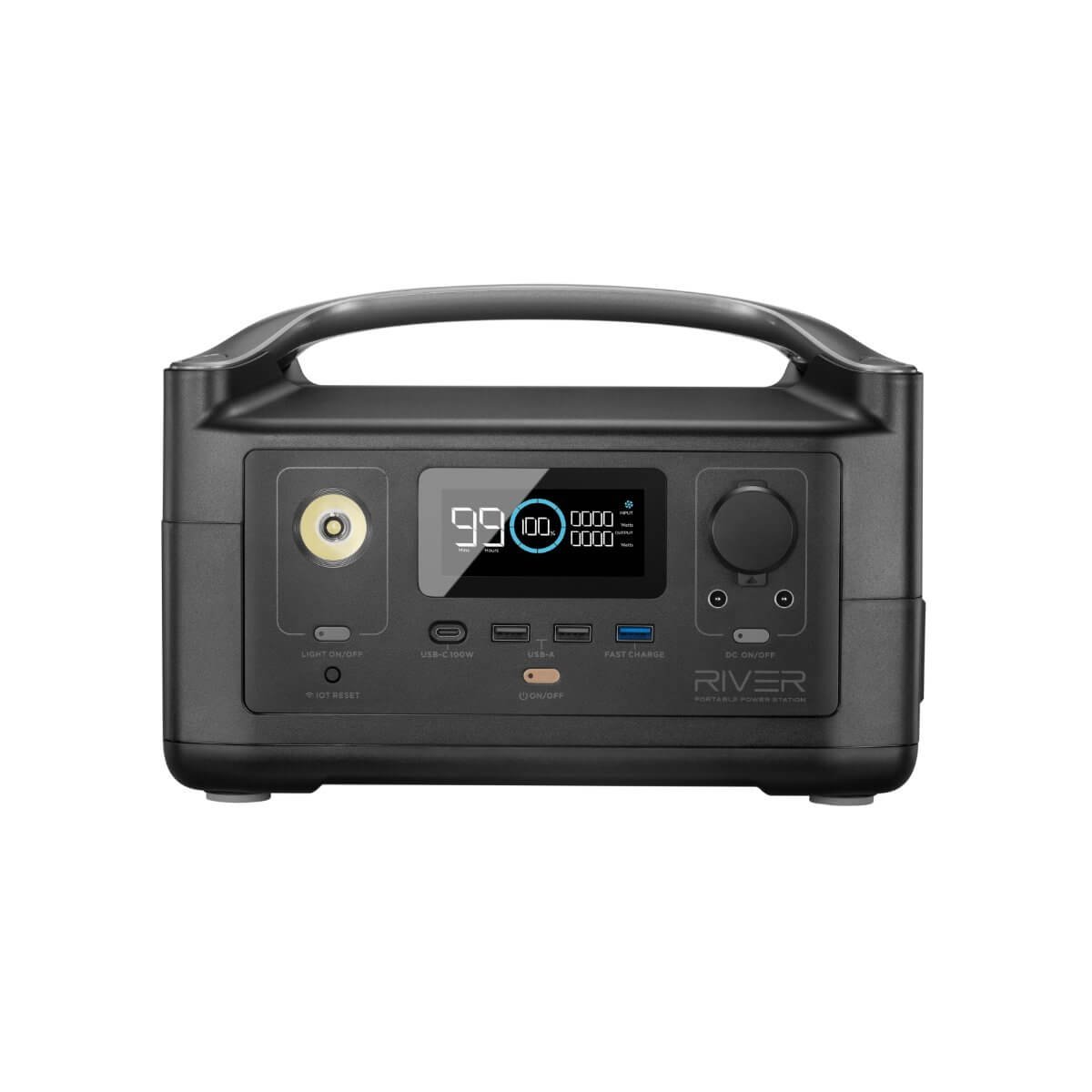
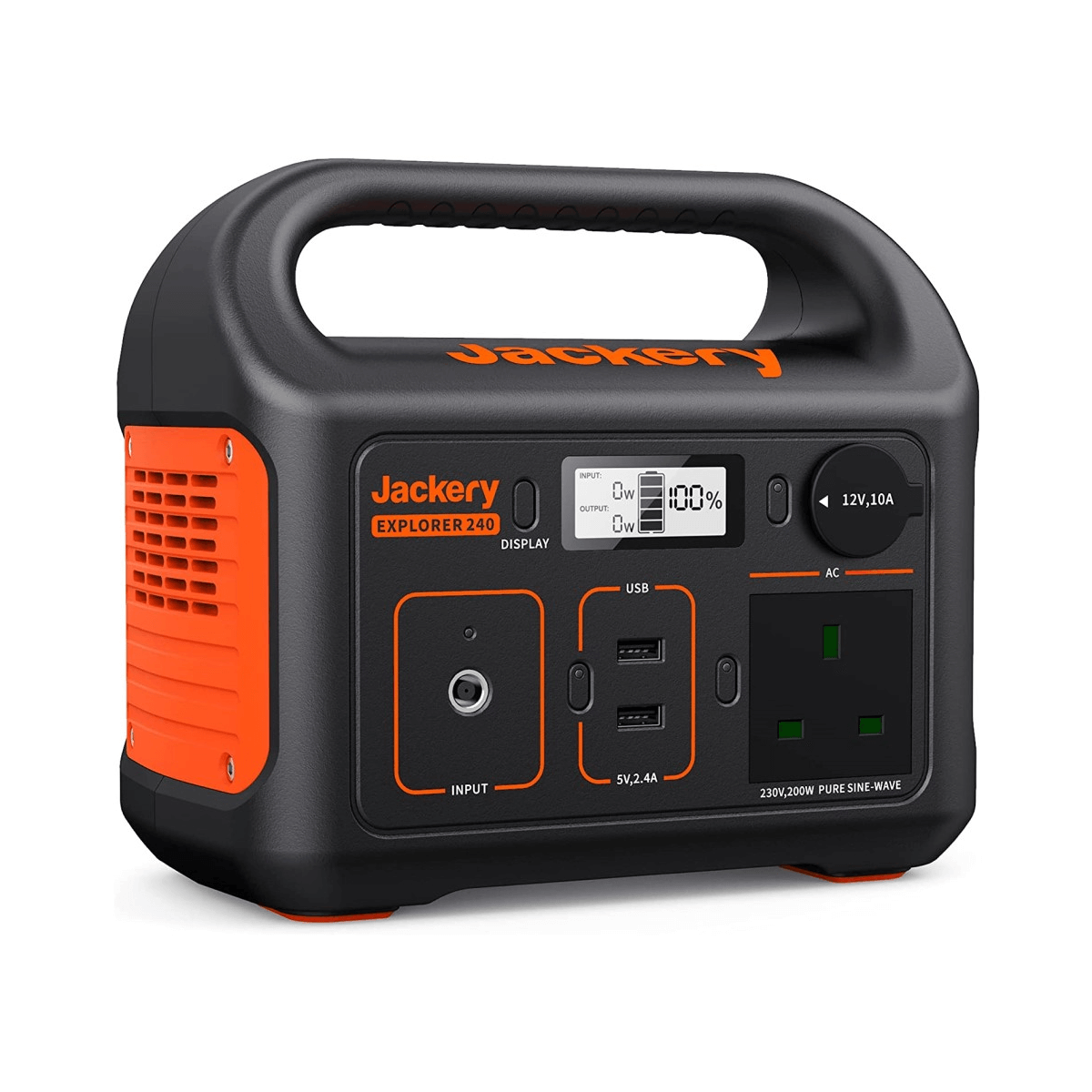
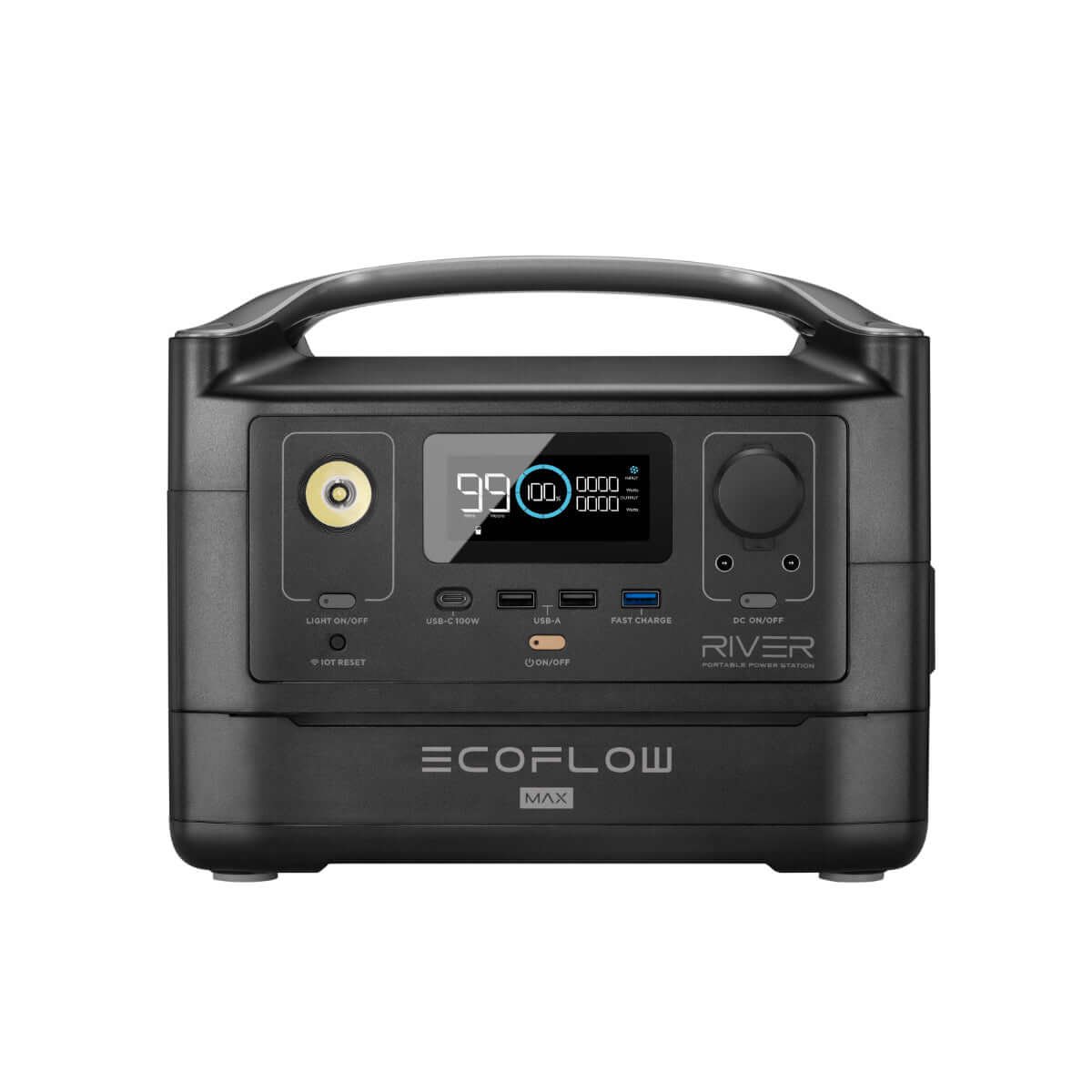


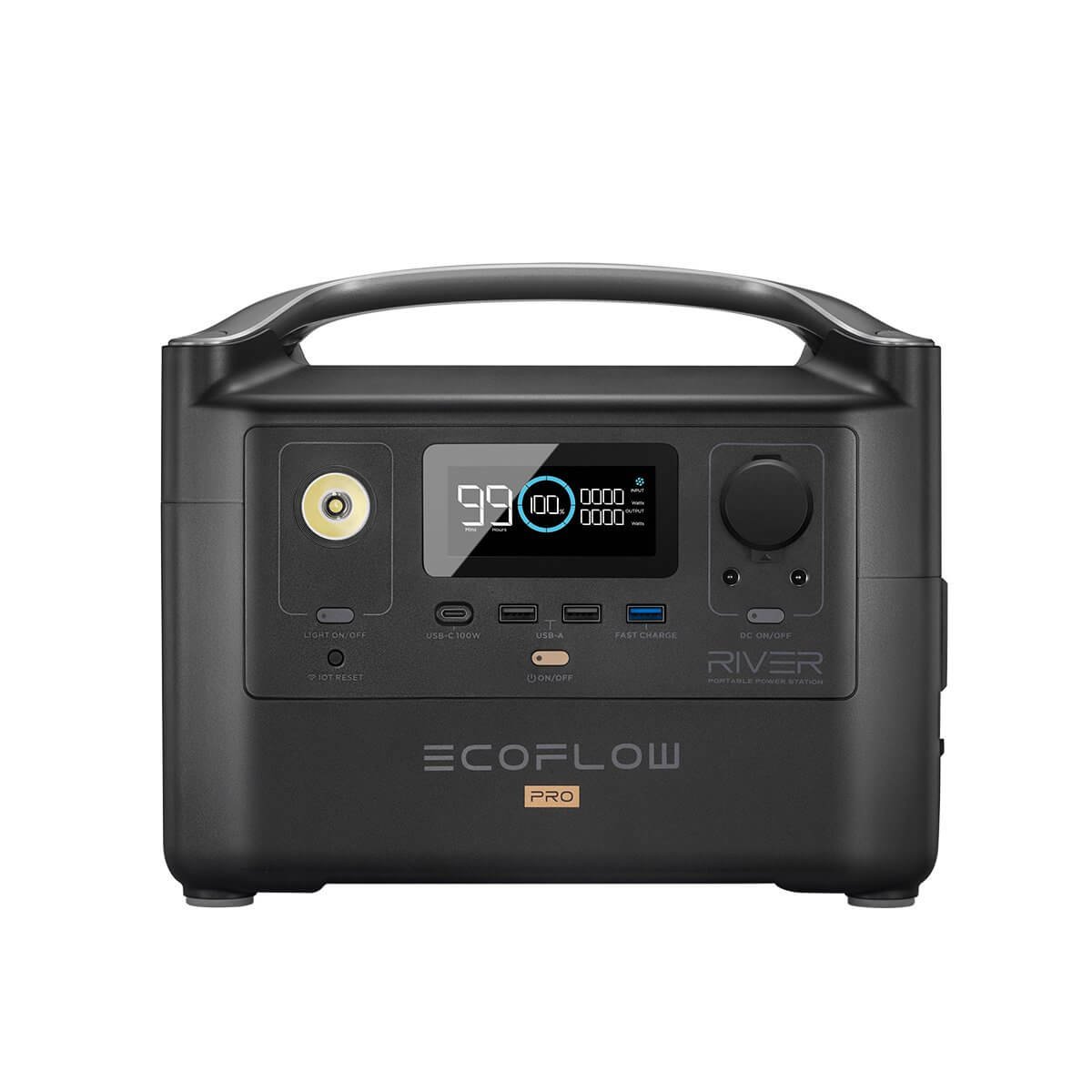
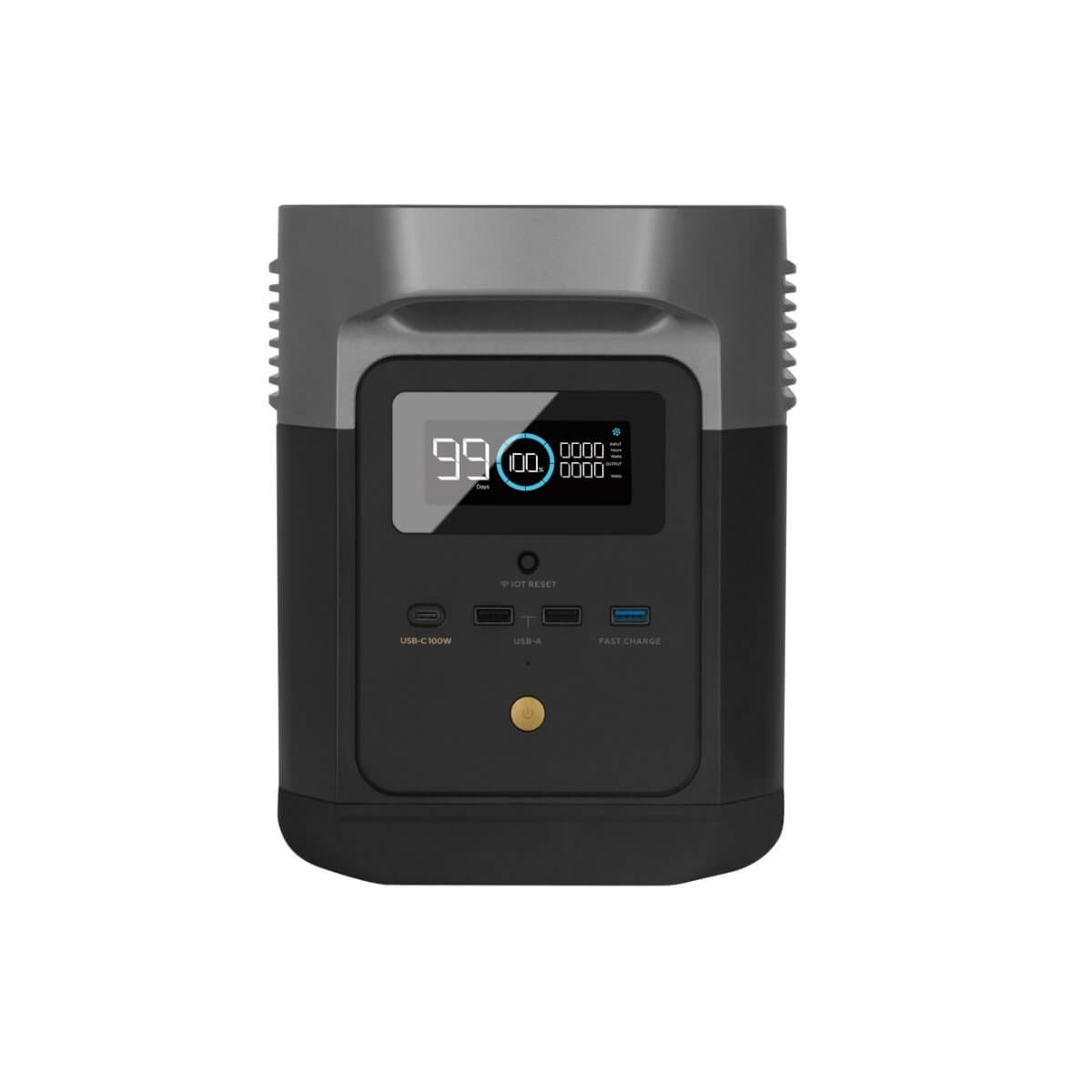
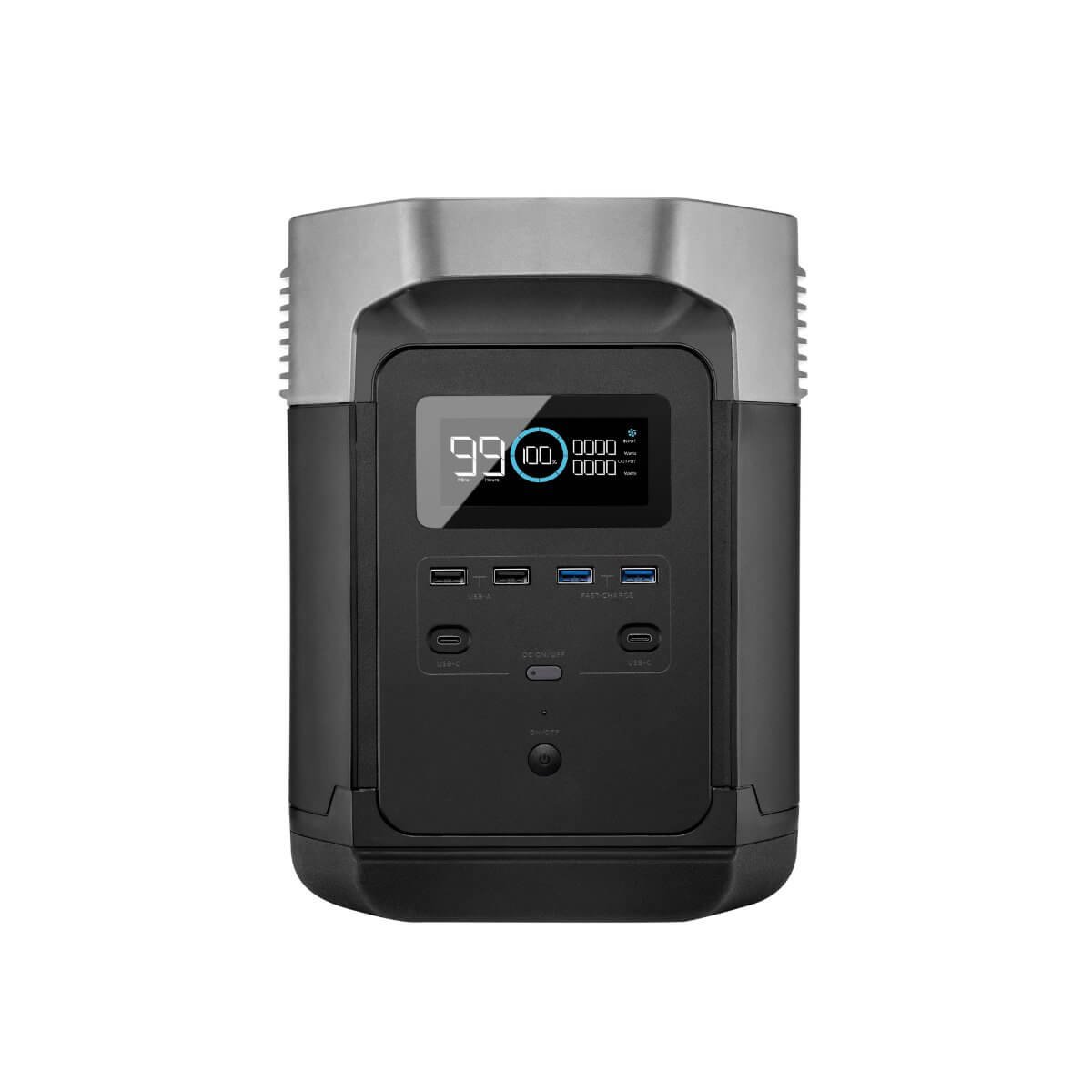

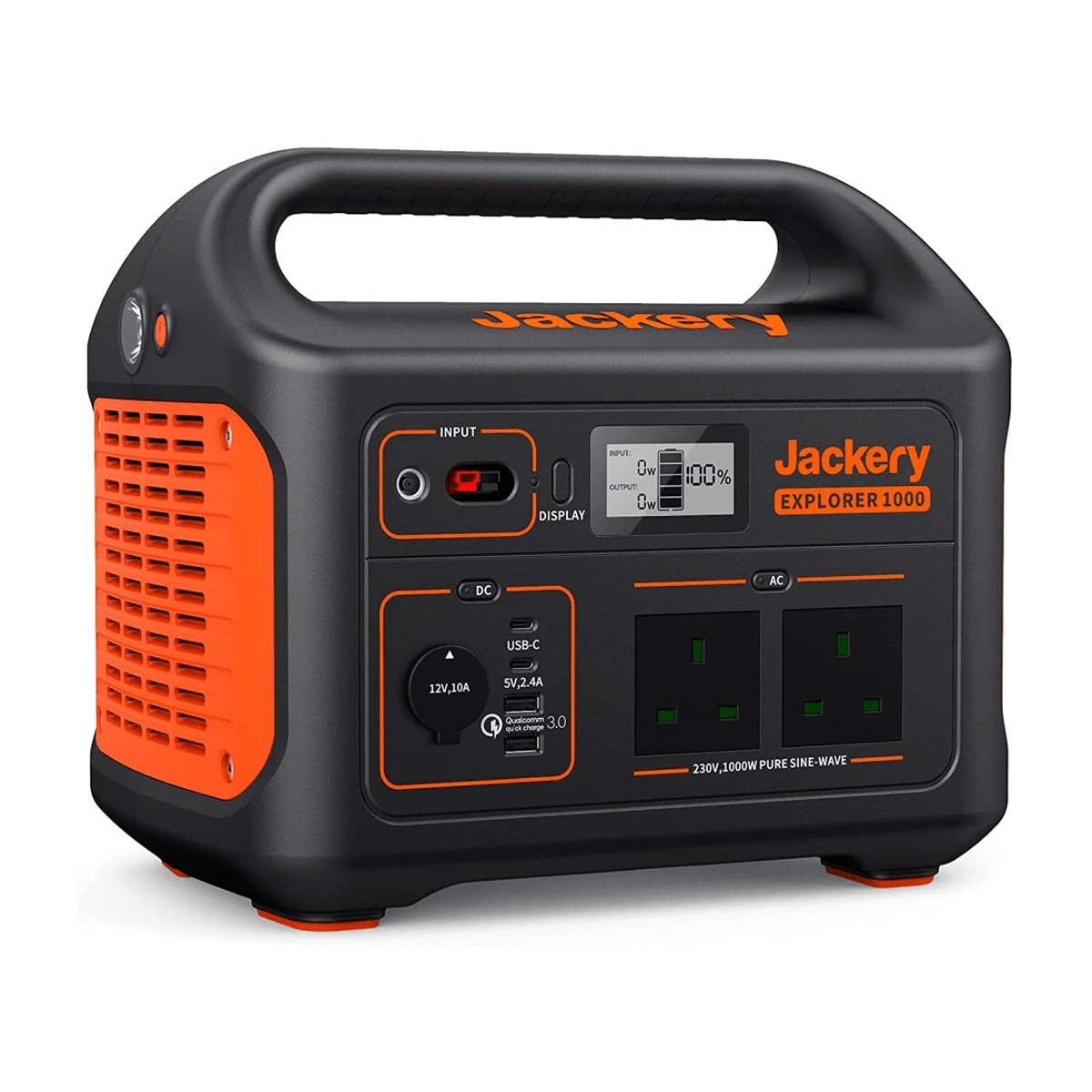
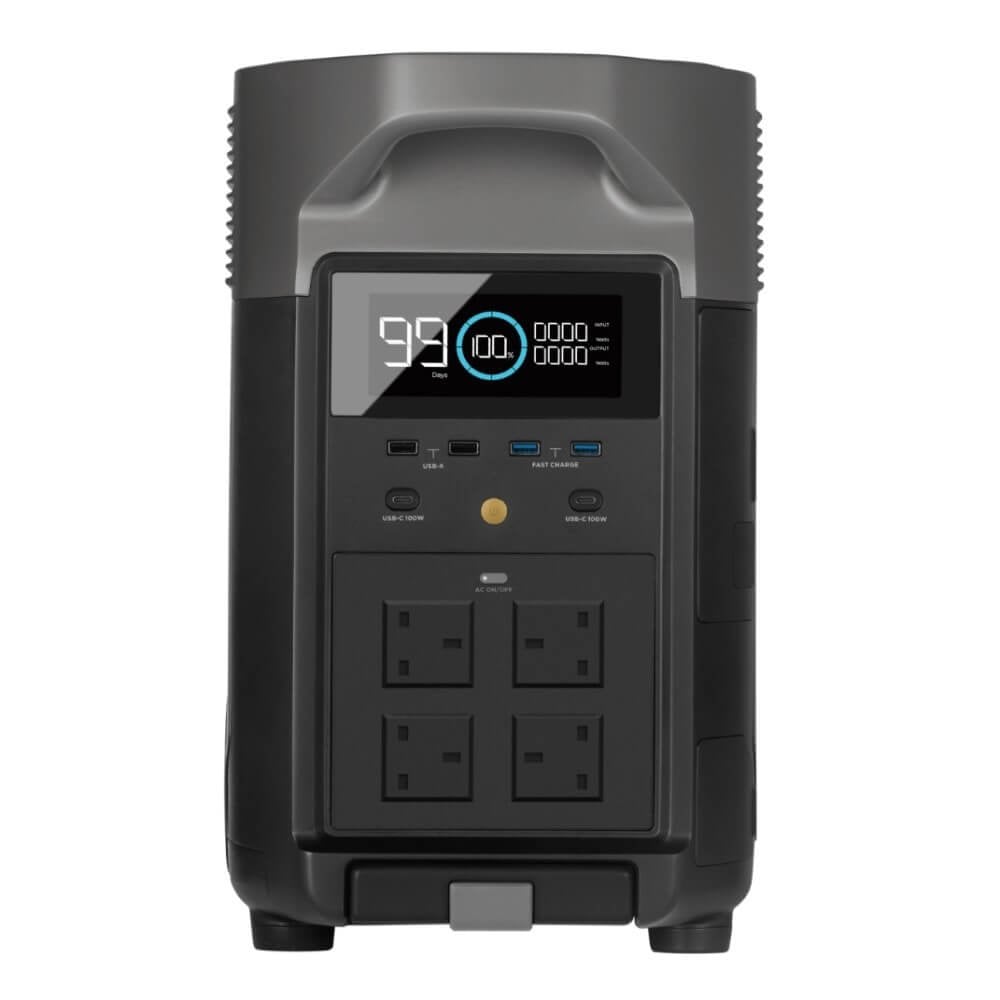

Be the first to comment!